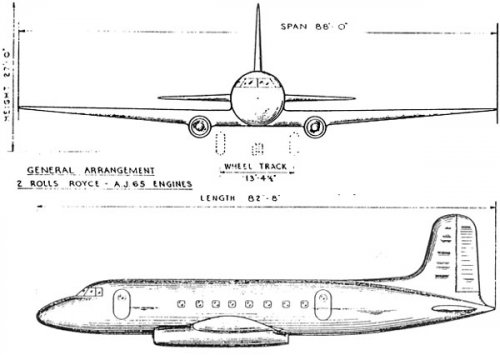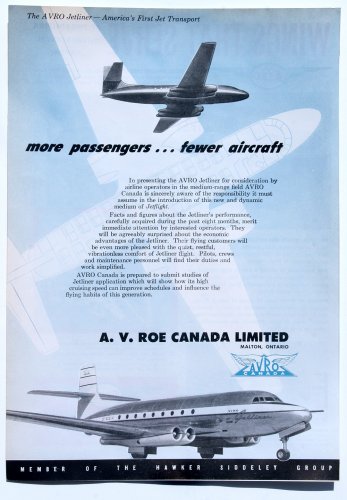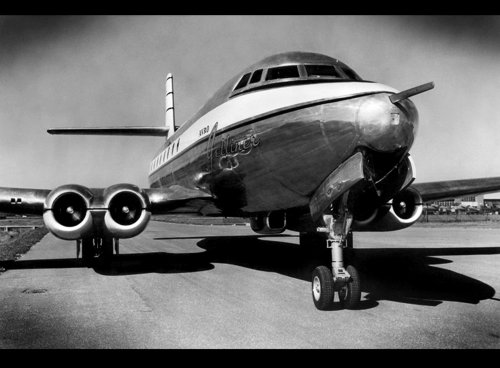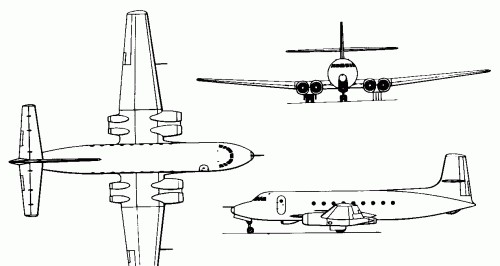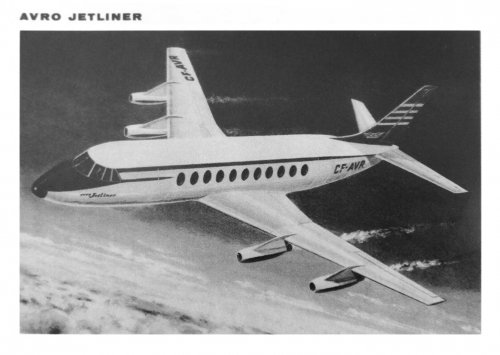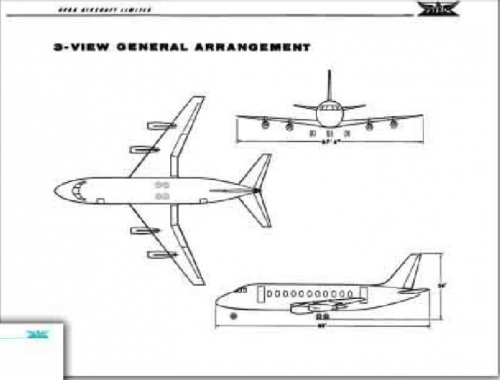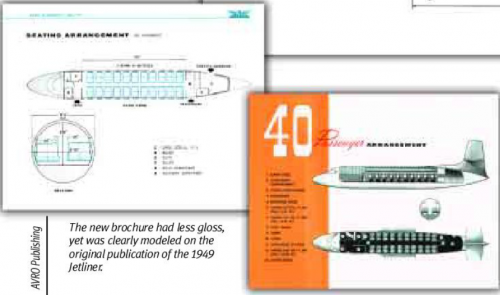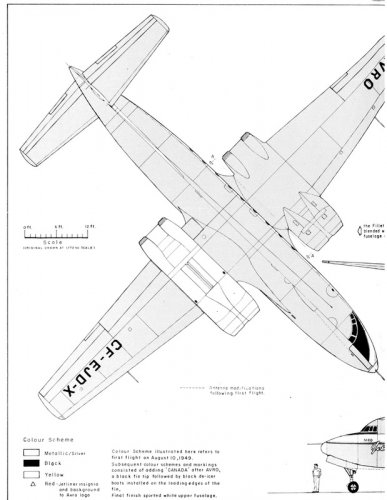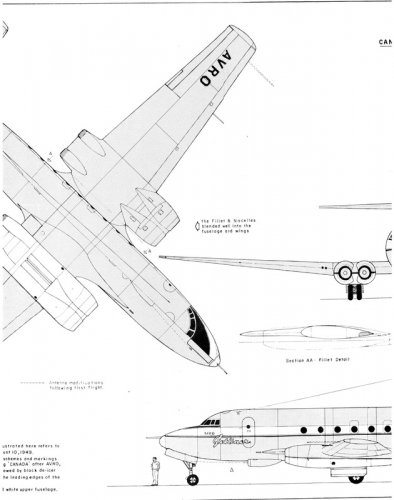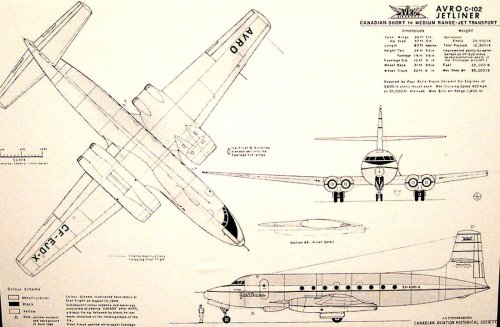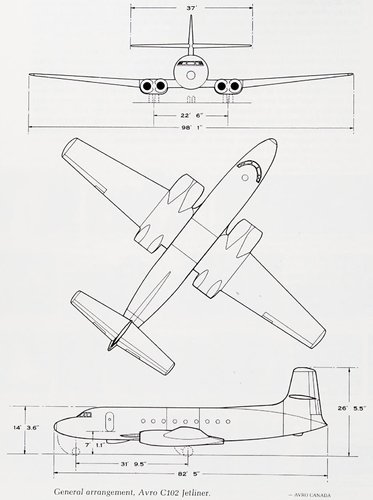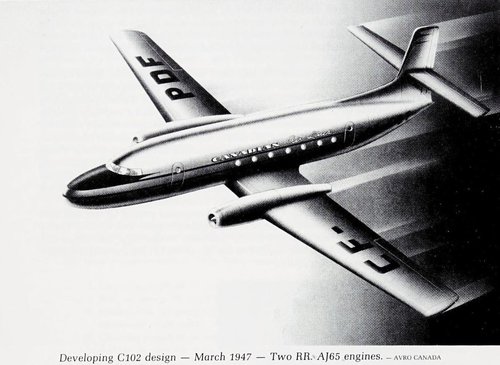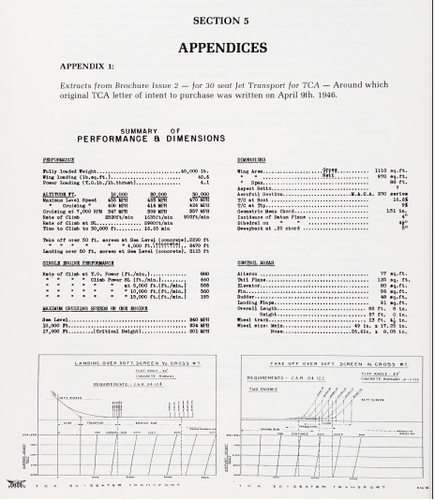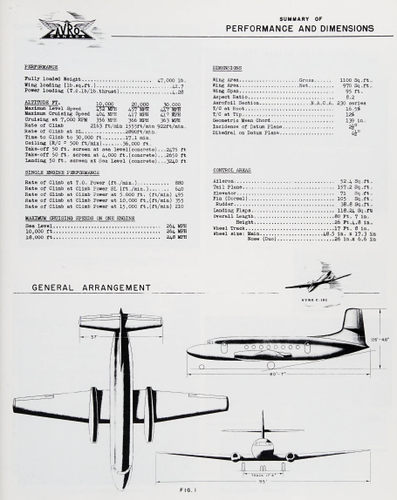- Joined
- 25 July 2007
- Messages
- 4,167
- Reaction score
- 3,835
A pair of early C.102 Jetliner studies from The Avro Canada C102 Jetliner, by Jim Floyd (ISBN 0-919783-66-X).
Both studies have twin Rolls-Royce AJ.65s (Avro Canada was denied access to the Avon engine for its civilian project, hence the later adoption of four Derwents).
The final AJ.65-powered C.102 concept had the engines slung beneath the wings. The original concept had a through-spar arrangement for the AJ.65s.
There was also a turboprop variation studied on behalf of Trans-Canada Airlines. This version was to be powered by four Armstrong-Siddeley Mamba turboprops. See Scale Modelling, CGI and Profiles for conjectual drawings of the Mamba-powered Jetliner.
http://www.secretprojects.co.uk/forum/index.php/topic,5184.0.html
Both studies have twin Rolls-Royce AJ.65s (Avro Canada was denied access to the Avon engine for its civilian project, hence the later adoption of four Derwents).
The final AJ.65-powered C.102 concept had the engines slung beneath the wings. The original concept had a through-spar arrangement for the AJ.65s.
There was also a turboprop variation studied on behalf of Trans-Canada Airlines. This version was to be powered by four Armstrong-Siddeley Mamba turboprops. See Scale Modelling, CGI and Profiles for conjectual drawings of the Mamba-powered Jetliner.
http://www.secretprojects.co.uk/forum/index.php/topic,5184.0.html


